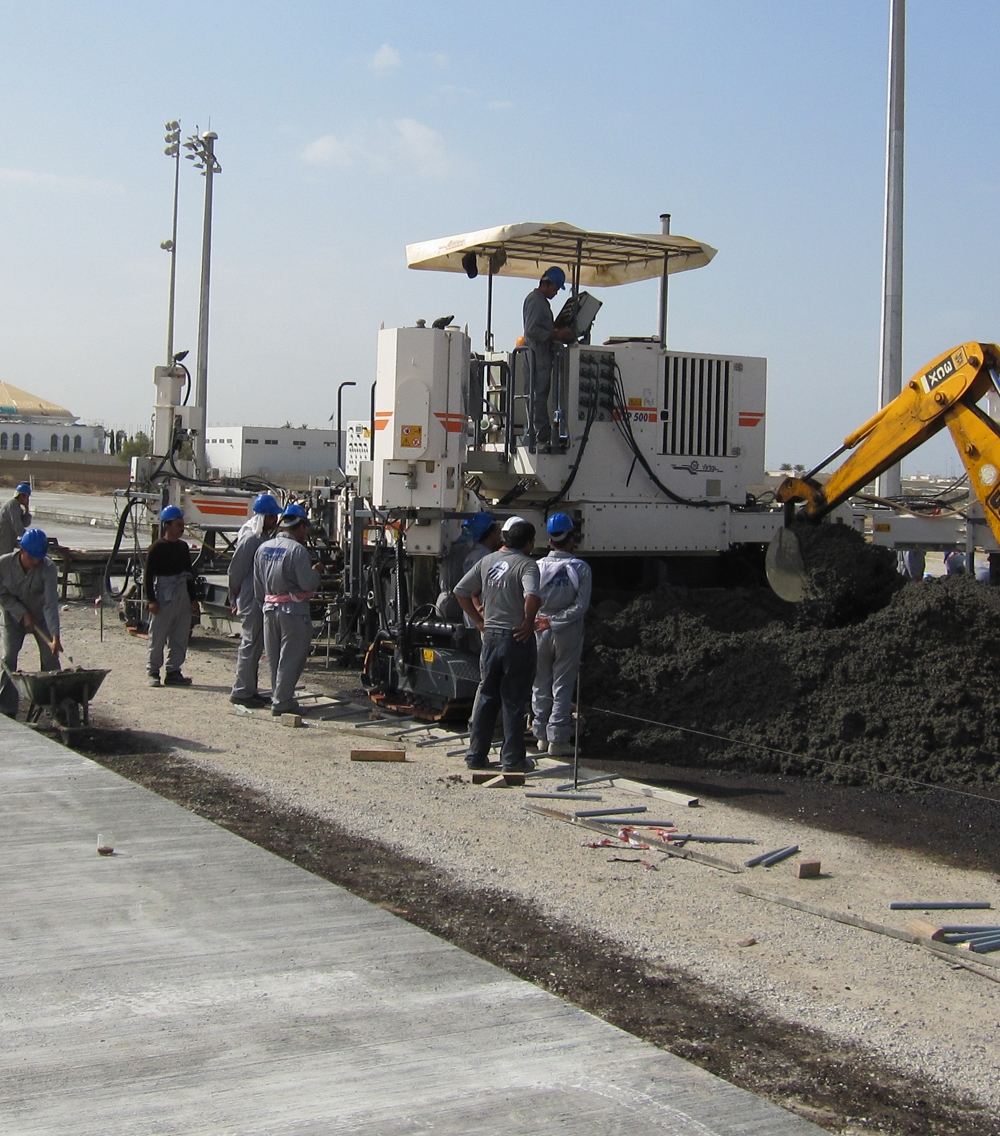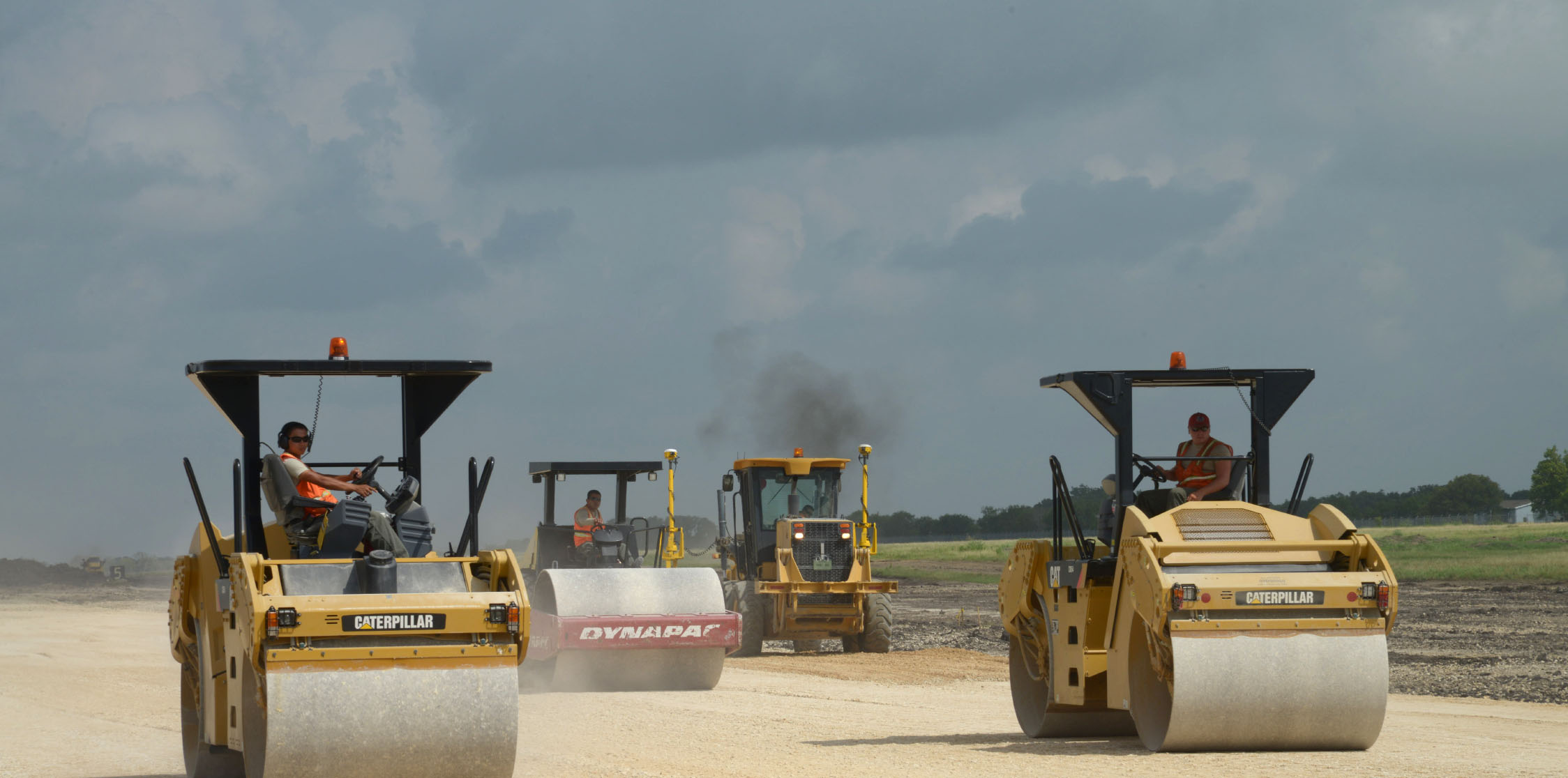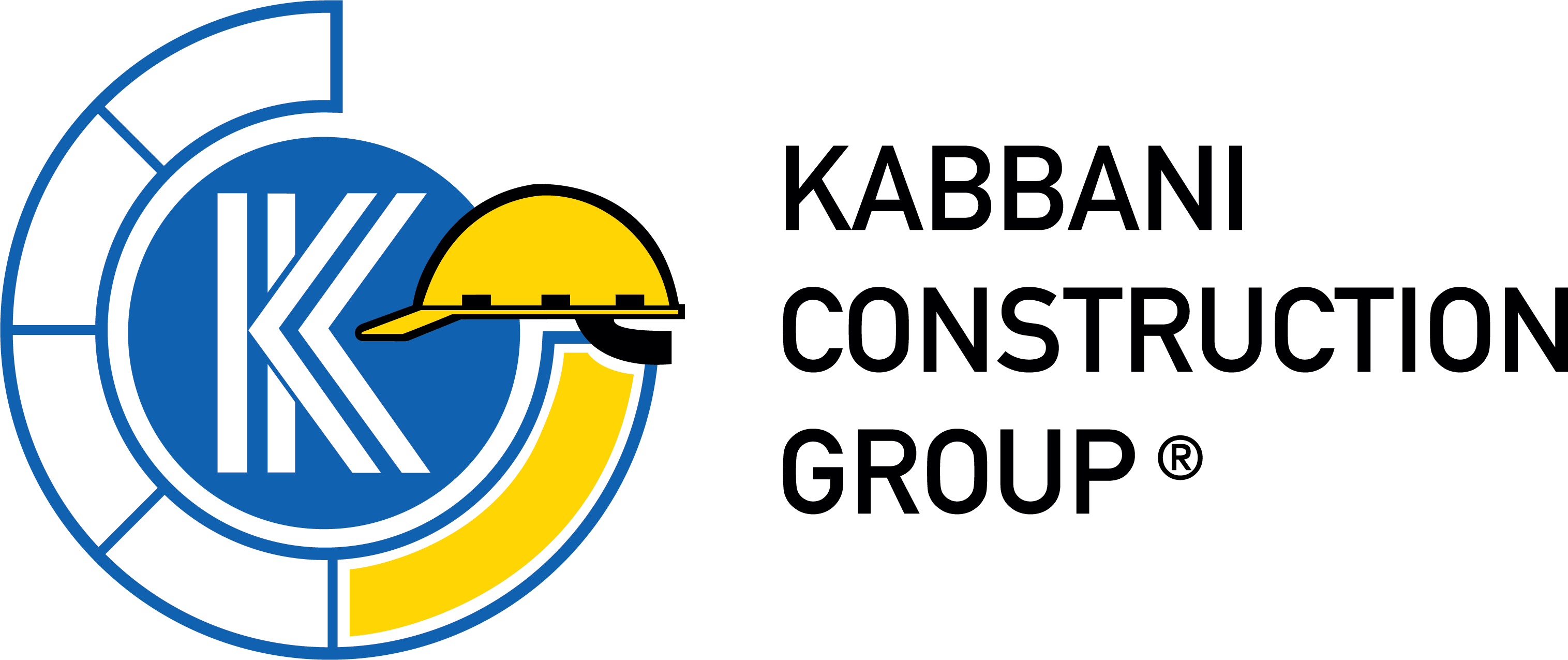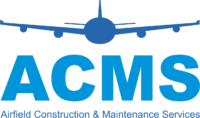Airfield Construction & Maintenance
There are many different steps that are necessary to take when you are constructing an airfield. First, you need a satisfying design; one that is suitable and appropriate for the location. Once the design is approved, you need to make sure the site is not only ready, but also capable of accommodating an airfield.
When it comes to airfield maintenance on the other hand, there are many different techniques and methods to revitalizing your airfield, such as runway re-texturing, epoxy repairs, overband sealing and more.

- Runway Retexturing
- Epoxy Repairs
- Grooving
- Overband Sealing
- Joint Sealing

Tasks Related to Airfield Construction & Maintenance
Runway Retexturing
Regardless of the pavement type, runway friction characteristics will change over time depending on the type and frequency of aircraft activity and weather conditions. In addition to ordinary mechanical wear and tear from aircraft tyres, contaminants can collect on runway pavement surfaces which decreases their friction properties. Contaminants such as rubber deposits, dust particles, jet fuel, oil spillage, water, snow, ice and slush cause friction loss on runway pavement surfaces.
Accidents and near accidents can occur from planes overshooting or veering off contaminated runways. It is therefore essential to maintain the airports runways to the highest possible standards and to ensure adequate surface drainage and grip, especially in areas of takeoff and landing.
Companies continue to develop technologies in order to reduce the braking distance of airplanes. Over the years they have developed different technologies and methods such as new braking mechanisms and methods to prevent the build up of snow, ice, water and contaminants on the runway. Also retexturing the surface by applying chemicals or blasting valuable drinking water have been a long used method.
However, cleaning and retexturing runways with mobile shot blasting systems has proven to be the safest, environmentally friendliest and cost effective solution.
Epoxy Repairs
When cracks go through a concrete surface, and there is visibility from both ends of the concrete element, the epoxy can be injected from both ends. Sometimes the application might require to make the epoxy more flowable or use another method to inject the epoxy into the concrete. The builder might also want to inject the epoxy more closely than usual so it gets into the deepest part of the concrete crack. Before deciding whether or not to use the epoxy repair, you will need to confirm that the cause of the crack is solved and no further movement is permissible.
When the concrete is still subject to additional movement, then the epoxy injection process is not recommended.
There are some instances on which this process is not recommended. Structural cracks or cracks that are wide enough should not be repaired using this method, instead, consult your engineer and determine whether some chipping and demolition are needed. When there is water into the crack and cannot be dried out, make sure to use a water repellent epoxy product. Concrete cracks due to corroded steel should not be repaired using the epoxy, as the steel will continue to decay and new cracks will appear.
Grooving
With the innovation of larger aircraft in the 1960’s, hydroplaning was becoming a more prominent problem. In order to combat this dangerous landing issue, NASA launched an intensive research program at its Langley Research Center to prevent plane tires from rolling or sliding across waterlogged pavement, potentially leading to planes being lifted away.
These researchers found that cutting slim grooves in the concrete created thin passages by which excess water follows and is run away from the runways. In this way, the risk of hydroplaning was reduced and planes were able to navigate wet runways more safely. By 1967, the Federal Aviation Administration’s and NASA’s efforts to improve safety resulted in grooving becoming a standard.
Benefits of Runway Grooving
- Reduces hydroplaning, both dynamic (standing water) as well as viscous (wet pavement with or without standing water).
- Maintains a higher level of contact between tires and pavement under weather conditions causing wet pavement.
- Allows for ample direction and breaking control of the aircraft when landing
- Transverse grooving allows for slight drainage of water, though not complete drainage
- Friction is provided by pavement texture
- Grooves cause water to fall through, minimizing water on top and allowing tires to grip the pavement.
- Worn down aircraft tires brake better on a grooved runway than new tires would on a non-grooved runway on wet pavement.
Overband Sealing
The most cost effective time to Crack Seal is when cracks first begin to appear in pavements that are in good condition, typically 3 – 5 years old.
Overband Crack Sealing is a beneficial treatment for pavements of any age, if areas which exhibit base failure are first repaired. Crack Sealing is an excellent pre-treatment for Chip Seals, Micro Surfacing and Hot-Mix overlays.
BENEFITS OF OVERBAND CRACK SEALING
- The most cost effective and least disruptive preventative maintenance process available
- Prevents water from entering, weakening and distorting the pavement sub-base
- Prevents cracks from ravelling and the formation of pot holes
- Reduces the damage from freeze-thaw cycles
- Prevents foreign material from entering the crack causing compressive stress with pavement expansion and contraction
Joint Sealing
Long-standing practice has been to seal all concrete pavement joints to minimize water and incompressible infiltration. Some owners/agencies no longer require joints to be sealed under certain conditions. Joint sealing may be omitted in newly constructed, doweled concrete pavement and some specialty concrete pavement types where erosion of the subbase is not of concern (e.g., undoweled bonded concrete overlays of asphalt pavements), but any previously sealed joint should be resealed as necessary during concrete pavement preservation activities. Joint sealing practices vary from location-to-location, but preliminary evidence suggests that while it might be acceptable to leave joints in high-speed highway pavements unsealed, joints in urban environments that service low-speed traffic should be sealed. In addition, airfields require sealed joints to prevent foreign object debris (F.O.D.) issues.


